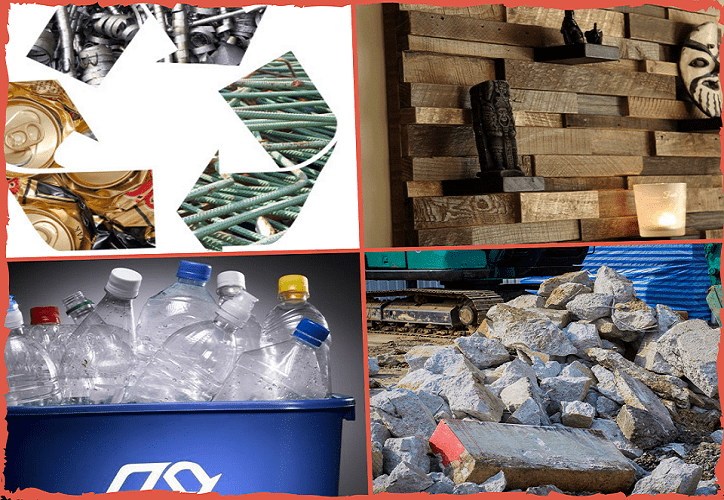Best Eco-Friendly and Sustainable Building Materials in Australia

As of January 2019, Australia’s construction sector was reported to responsible for over 25% of our greenhouse gas emissions and non-bio-degradable waste. With Australia aiming to be a zero-emissions country by 2030, we are looking at ways we can reduce our carbon footprint while still accommodating population growth and existing structure maintenance. That’s why a shift to eco-friendly building materials is the first step towards a greener future.
Eco-friendly building materials utilise natural ingredients to reduce non-bio-degradable waste and target some of the problems that can lead to increased carbon emissions. For example, poor insulation can lead to increased emissions from an air conditioning unit.
In this article, we are going to discuss some of the best eco-friendly, sustainable buildings and construction materials in Australia and environmental significance behind them.
1. Eco-friendly thermal insulation materials
In general cases, air leakage in both residential and commercial buildings is responsible for increased heating and cooling costs in Australia. That’s why thermal insulation one of the most cost-effective way to both live comfortably and save on electricity bills.
Eco-friendly thermal insulation materials, not only reduces emissions by preventing the loss of air but also makes use of natural and biodegradable ingredients. Installing thermal insulation can also double as fire protection, damp proofing, and noise insulation.
Eco-friendly thermal insulation is made from Australian ingredients including, cellulose, hemp, wood, earth wool, sheep’s wool, glass wool and polyester. Compared to their artificial counterparts, these renewable materials expend less energy to manufacture and are entirely recyclable or degradable..
Below we’ve listed a few popular eco-friendly thermal insulators and some more information -
✅ Cellulose: This is the most popular material for thermal insulation in Australia. The flock or boards is made of moulded newspaper. Manufacturers also add aluminium sulphate and borates to the boards to increase fire protection.
✅ Polyester: Polyester is 100% recyclable and non-flammable thermal insulation materials made out of recycled synthetic elements.
✅ Glass wool: Glass wool is another fire retardant, that is cost-effective and a popular insulation option for buildings in Australia. Glass wool is made from recycled glass bottles, sand, and other recycled materials.
✅ Sheep’s wool: Sheep’s wool is a natural fibre option used for building insulation. The wool acts as a thermal barrier, trapping air and regulating humidity.
2. Reclaimed wood, recycled metal and plastics

Recycled metal, plastic, concrete, and reclaimed timber are all often used instead of conventional building materials in an act to reduce waste from existing construction and maintenance. Below we take a closer look at the benefits of these building materials.
? Recycled metal: Recycled metal tends to be durable, long-lasting, and water/ pest-resistant. Because of the factors listed above, recycled metal makes an ideal material choice for all roofing, roofing, structural supports, facades, and many other plumbing components. The reason why recycled metal is more sustainable, unlike aluminium or steel, is due to the low energy to takes to re-manufacture. In contrast, it’s counterparts go through the process of raw extraction, heating, mining, and processing, resulting in high energy emissions. Using recycled metal provides users with a feasible alternative, due to its durability and the lower energy expended.
? Reclaimed wood: Like recycled metal, recycled and reclaimed timber is a popular building material. Used in walls, beams, panels, framing, cabinetry, and other furniture it’s the unique and eco-friendly choice for your home. In Australia, 75% of freshly sawn timber is used for residential construction. At the same time, recycled wood is a much more sustainable option with reduced embodied energy and the bonus of creating a completely one of a kind look for your home.
However, a word of caution- unlike recycled metal, wood is susceptible to water and pests, that why a professional should assess any reclaimed wood pieces before use.
? Recycled plastic: Construction and demolition work contributes to a large part of Australias non-degradable waste. However, it’s through repurposing plastic that we have created a sustainable building material. Much like the other building blocks, recycled plastic is less energy-intensive to produce compared to other building materials like cement or steel.
? Recycled Concrete Aggregate: Recycled Concrete Aggregate (RCA) is a common building material choice for contractors in Australia, giving new life to concrete waste, RCA is a bit different than other materials mentioned. By combining all-natural resources, this concrete is a leading natural resource for sustainability.
When it comes to reducing construction waste, decreasing transportation costs, and sustaining landfills, RCA plays a crucial role as an eco-friendly building construction material. Moreover, RCA can also be used in different building and construction site, with both major construction applications and home improvement endeavours.
3. Hempcrete:
As a great eco-friendly alternative to concrete, hempcrete is growing in popularity amongst Aussie builders, due to its role as an insulator and moisture regulator in buildings.
Hempcrete is an ultra-lightweight material that is entirely bio-based! Composited of hemp stalks, hurds, and traditional lime mixes - what makes hempcrete, so energy efficient is its ability to regulate temperatures in buildings. This material is also hygroscopic, meaning it absorbs moisture, regulates humidity, and even negates carbon dioxide within the structure. Moreover, this natural plant product is durable, showing no cracks over long periods. Because of its eco-friendly footprint, value and immense versatility to be used in roofs and roofs, hempcrete has been becoming the staple of modern housing solutions in Australia.
Check out a video on using the right amount of water while hemp building:
Are you planning to renovate your property with maximised sustainability and eco-friendliness in Australia?
Accredited thermal performance certificates and energy efficiency audits from local rating experts like Superior Energy Rating can assist you throughout the entire building and renovation, evaluating the building’s current energy efficiency.
Get in touch with us today to learn more about our energy rating services for residential, commercial and industrial properties across Australia.


